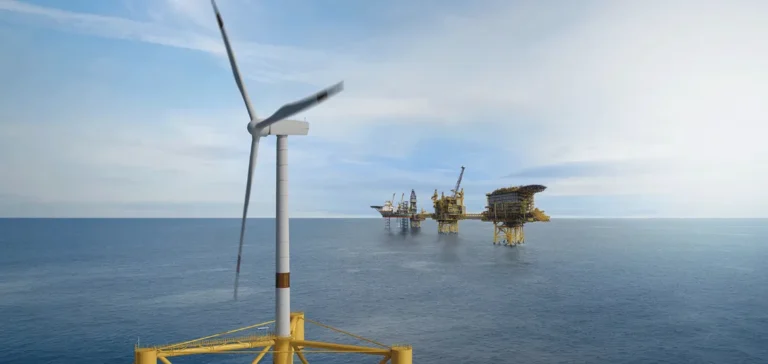The American company Ocergy, Inc. announced the launch of the Reduced Commercial Risks with Demo of 15+ MW (RECORD15) project, a joint industrial initiative designed to test a floating wind turbine exceeding 15 MW on its innovative OCG-Wind™ platform. This project anticipates effective commissioning in 2028, involving major industrial partners including Germany’s EnBW Energie Baden-Württemberg AG, Japan’s Kyuden Mirai Energy Company, and TEPCO Renewable Power.
Innovation and technical objectives
The OCG-Wind™ platform, developed by Ocergy, features a modular design enabling serial production using prefabricated steel sub-assemblies compatible with existing infrastructures. Its specificity lies in a tower designed with a “stiff-stiff” approach, addressing the challenges associated with deploying very large turbines on floating foundations. This configuration aims to facilitate the integration of the latest wind turbines, regardless of manufacturer.
The essential objective of the RECORD15 project is to demonstrate the technical and economic feasibility of industrialized fabrication and rapid assembly for next-generation offshore wind turbines. This pilot aims to remove the remaining technical and financial barriers identified by the industry before the deployment of pre-commercial wind farms planned in Europe by the end of the decade and subsequent GW-scale programmes in Europe and Asia.
Data collection and certification
During the operational phase, performance and technical data from the floating turbine will be collected. This information will optimise preventive and corrective maintenance procedures for future commercial installations. Additionally, these data will feed financial models essential for risk assessment and profitability, thereby improving investor confidence in future similar projects.
Independent certification will also be pursued by Ocergy and its partners for this pilot project. This initiative aims to mitigate risks associated with the deployment of high-power offshore floating turbines, thus facilitating their acceptance in global financial and energy markets.
Impact on supply chain
The RECORD15 project also seeks to support the robust structuring of a supply chain capable of rapidly industrializing floating wind technology at large scale. Preparing the logistics chain will enable future developers to confidently implement their commercial projects in the coming years.
Thus, the RECORD15 project could serve as a major stepping stone for large-scale commercial deployments of next-generation floating wind turbines in Europe and Asia. Proactive preparation of these markets could significantly influence the global industrial dynamics of this promising sector.






















